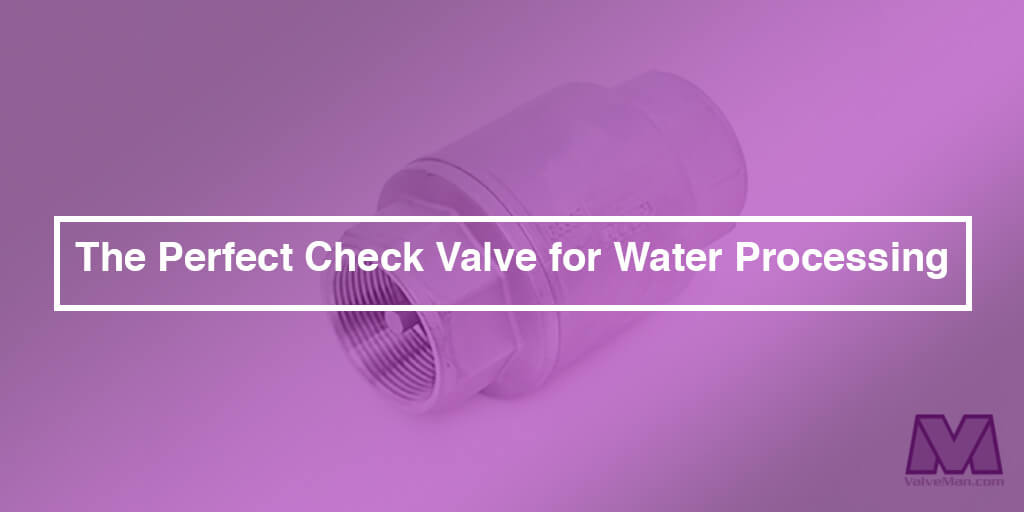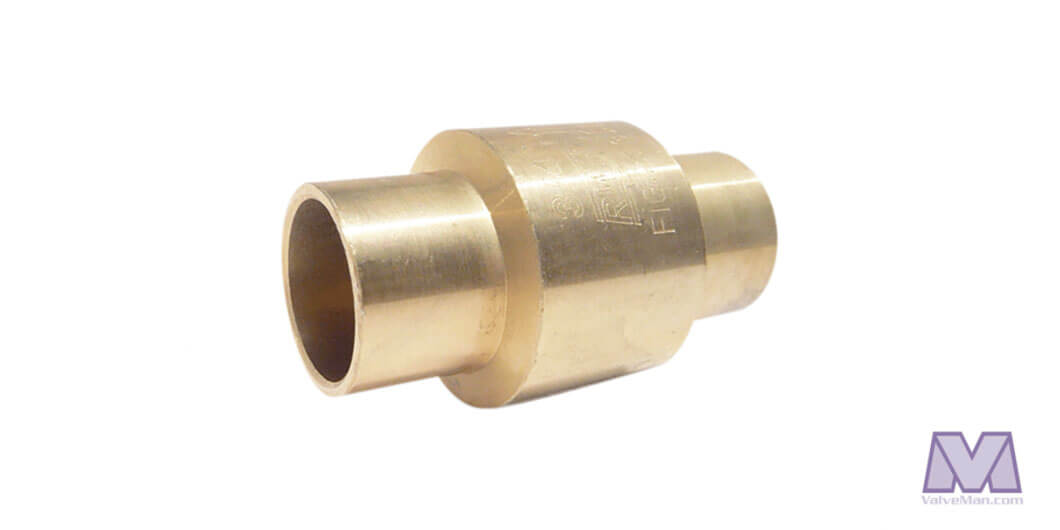The Perfect Check Valve for Water Processing
Posted by Gilbert Welsford, Jr on Feb 7th 2017

Check valves for water applications require just as much thought as you would put into any other valve selection. Like every liquid and other various media, water has its own peculiar characteristics which should be coupled with a valve that addresses these specifically. Granted, this is an obvious assumption, but selecting the perfect check valve for water may depend upon some not-so-obvious reasons.
Problems With Transporting Water
- Water Hammering: While this hydraulic phenomenon can be observed in other liquids, water hammering happens when a media is forced to suddenly stop or change direction. As the water or other media is trapped within the pipeline with only two directions in which to travel, this occurrence comes with a vibration in the line and very often a loud noise. Both can spell damage. Transporting water is a commonplace event in our world, in numerous applications, but it remains a tricky job to this day, as maintaining a steady flow rate indefinitely is almost impossible. The most likely cause of water hammering is when a pump stops without warning. Water reverses, traveling backwards toward the pump because the check valve could not close fast enough. Water hammer is sometimes called water slam.
- Reverse Flow: Unchecked, reverse flow of water (or any media for that matter) can cause a pump to spin backwards, doing irreparable damage. As well, when water travels in the wrong direction for any amount of time it can cause serious damage throughout an entire distribution system. Unlike a backflow preventer, which is comprised of, and works in unison with, several check valves, a single check valve is not always foolproof. Reverse flow can and does happen.
- Valve Chatter: Valve chatter occurs when there is a constant and frequent opening and closing of a valve. Valve chatter can cause damage to the valve and the line, and can lead to total failure.

Checking the Problems with Water
While check valves are incredibly dependable, and newer, better, and more innovative models come out every year, they all seek to prevent the same three problems listed above. Check valves, due to their simplicity, will work regardless of outside factors--such as a power failure--but are still subject to the direction of flow, and check valve design characteristics and/or flaws.
There are two basic designs for check valves. One utilizes a disc (basically a flap), and one a free-floating ball. They are all singular directional, meaning their job is to prevent water from flowing backwards through a line or system. Both types present pros and cons, but perform the same job with fairly equal success (though manufacturers of one design or the other may seek to prove otherwise). In the end, however, a check valve's success depends on an action that is not too fast, but not too slow, either of which can lead to water hammering or backflow. As well, valve chatter is due to the common mistake of oversizing--just because a valve fits, doesn't mean it is appropriate for the application. Finally, like most valves, a check valve's success depends on how well it seals. All of these things should be taken into consideration when choosing a check valve.
If you found this article informational and entertaining, and would like to read something similar, you may enjoy:

 888-825-8800
888-825-8800









